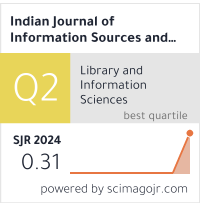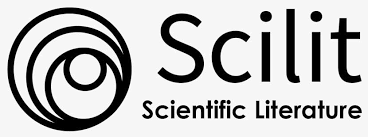Pleasure Reading and the Role of Libraries: A Review of the Literature
DOI:
https://doi.org/10.51983/ijiss-2023.13.1.3537Keywords:
Pleasure Reading, Leisure Reading, Recreational Reading, Role of Libraries in Pleasure ReadingAbstract
Pleasure reading soothes mental stress and dispels boredom from hectic pressure. A considerable number of studies have been conducted worldwide regarding pleasure reading. The purpose of this study is to conduct a state-of-art review of pleasure reading. This review also covers the role of libraries for promoting pleasure reading to set up the potential research directions for future studies. The analysis and findings suggest that pleasure reading possess positive effect on following aspects - academic achievement, meta-cognition, self-realization, achieving potential quality, career enhancement and so on. From the reviewed literature it is observed that libraries and library professionals with the help of researchers, practitioners, and policy makers can foster a shared culture to promote pleasure reading trend among the enthusiast readers community.
References
Abdolrezapour, P., & Tavakoli, M. (2012). The relationship between emotional intelligence and EFL learners’ achievement in reading comprehension. Innovation in Language Learning and Teaching, 6(1), 1-13.
Abdullah, S., Rahim, P. R., Setia, R., Mohamad, R., Ghazali, N., Sabapathy, E., & Hassan, N. S. (2012). Reading for Pleasure as a Means of Improving Reading Comprehension Skills. Asian Social Science, 8(13). DOI: 10.5539/ass.v8n13p233.
Adams, J. (1989). The Determination of Historical Popular Reading Habits: A Case Study. Journal of Documentation, 45(4), 318-326. DOI: 10.1108/eb026848.
Ahmed, S. (2015). Reading Habits and Attitudes of UMSKAL Undergraduates. International Journal of Applied Linguistics and English Literature, 5(2). DOI: 10.7575/aiac.ijalel.v.5n.2p.189.
Allan, J., Ellis, S., & Pearson, C. (2005). Literature circles, gender and reading for enjoyment.
Alex-Nmecha, J. C., & Horsfall, M. N. (2019). Reading Culture, Benefits, and the Role of libraries in the 21st century. Library Philosophy and Practice, NA-NA.
Alexander, J., & Jarman, R. (2018). The pleasures of reading non-fiction. Literacy, 52(2), 78-85. DOI:10.1111/lit.12152.
Antón, C., Camarero, C., & Rodríguez, J. (2017). Pleasure in the use of new technologies: The case of e-book readers. Online Information Review, 41(2), 219-234. DOI:10.1108/oir-10-2015-0331.
Bamberger, Richard. (1975). Promoting the reading habit. France: UNESCO, 1975. Retrieved from https://www.academia.edu/25986918/Promoting_the_Reading_Habit.
Beglar, D., Hunt, A., & Kite, Y. (2011). The Effect of Pleasure Reading on Japanese University EFL Learners’ Reading Rates. Language Learning, 62(3), 665-703. DOI:10.1111/j.1467-9922.2011.00651.x.
Bergland, C. (2014). Reading fiction improves brain connectivity and function. Psychology Today, 4.
Berns, G. S., Blaine, K., Prietula, M. J., & Pye, B. E. (2013). Short-and long-term effects of a novel on connectivity in the brain. Brain connectivity, 3(6), 590-600.
Billington, J, (2015). Reading Between the Lines: The Benefits of Reading for Pleasure, Quick Reads, University of Liverpool.
Bosman, R., Glover, J., & Prince, M. (2008). Growing Adult Readers: Promoting Leisure Reading in Academic Libraries. Urban Library Journal, 15(1). DOI:10.31641/ulj150105. Retrieved from http://academicworks.cuny.edu/ulj/vol15/iss1/5.
Burak, L. (2004). Examining and Predicting College Students’ Reading Intentions and Behaviors: An Application of the Theory of Reasoned Action. Reading Horizons: A Journal of Literacy and Language Arts, 45(2). Retrieved from https://scholarworks.wmich.edu/reading_horizons/vol45/iss2/4.
Campbell, K. A., O’Brien, D., & Flanigan, J. (2005). Creating a Reading Culture in an Academic Library. The Southeastern Librarian, 53(1), 5. Retrieved From https://digitalcommons.Kennesaw.edu/seln/vol53/iss1/5.
Caramela, S. (2017, June 12). Read a Book! It’s Good for Your Career. Retrieved October 21, 2019, from https://www.businessnewsdaily.com/9998-reading-helps-career.html.
Christie, D. A. (2012). Alan Jacobs: The Pleasures of Reading in an Age of Distractions. Publishing Research Quarterly, 28(2), 155-156. DOI:10.1007/s12109-012-9262-7.
Clark, C., & Rumbold, K. (2006). Reading for Pleasure: A research overview. Retrieved from London: National Literacy Trust.
Cobb, T. (2007). Computing the vocabulary demands of L2 reading. Language Learning & Technology, 11, 38-63.
Cremin, T. (2007). Revisiting reading for pleasure: Delight, desire and diversity. In: Goouch, Kathy and Lambirth, Andrew eds. Understanding Phonics and the Teaching of Reading: A Critical Perspective. Berkshire, UK: McGraw Hill, 166-190.
Cremin, T. & Swann, J. (2016) Literature in Common: Reading for Pleasure in School Reading.
Cullinan, B. E. (2000). Independent reading and school achievement. School Library Media Research, 3(3), 1-24.
Day, R. R., & Bamford, J. (2018). Extensive reading. The TESOL encyclopedia of English language teaching, 1-7.
Deveci, T. (2013). Promoting lifelong learning. The Asian EFL Journal Professional Teaching Articles, 7, 4-19.
Dewan, P. (2010). Why Your Academic Library Needs a Popular Reading Collection Now More Than Ever. College & Undergraduate Libraries, 17(1), 44–64. DOI: 10.1080/10691310903584775.
Dewan, P. (2016). Economic well-being and social justice through pleasure reading. New Library World, 117(9/10), 557-567. DOI:10.1108/nlw-03-2016-0019.
Diers, B., & Simpson, S. (2012). At your leisure: Establishing a popular reading collection at UBC Library. Evidence Based Library and Information Practice, 7(2), 49-66.
Duncan, S. (2013) Understanding Reading for Pleasure for emerging adult readers NRDC: London.
Dungworth, N., Grimshaw, S., McKnight, C., & Morris, A. (2004). Reading for pleasure?: A summary of the findings from a survey of the reading habits of year 5 pupils. New review of children’s literature and librarianship, 10(2), 169-188.
Ebrahimi, M. R., Khoshsima, H., & Zare-Behtash, E. (2018). The Impacts of Enhancing Emotional Intelligence on the Development of Reading Skill. International Journal of Instruction, 11(3), 573-586.
Ekstam, J. M., & Knutsen, K. S. (2018). “Reading for pleasure, reading for understanding: Reading and metacognition in the English language classroom”. Acta Didactica Norge, 12(2), DOI:10.5617/adno.6227.
Garces-Bacsal, R. M., Tupas, R., Kaur, S., Paculdar, A. M., & Baja, E. S. (2018). Reading for pleasure: Whose job is it to build lifelong readers in the classroom? Literacy, 52(2), 95-102. DOI: 10.1111/lit. 12151.
Guthrie, J. T., & Alvermann, D. E. (Eds.). (1999). Engaged reading: Processes, practices, and policy implications. Teachers College Press.
Harlan, L., & Rigby, M. (2015). Whats Old is New Again: The Popular Reading Collection at University of Oregon Libraries. OLA Quarterly, 21(2), 17–24. DOI: 10.7710/1093-7374.1798.
Hempel-Jorgensen, A., Cremin, T., Harris, D., & Chamberlain, L. (2018). Pedagogy for reading for pleasure in low socio-economic primary schools: Beyond ‘pedagogy of poverty’? Literacy, 52(2), 86-94. DOI:10.1111/lit.12157.
Hitosugi, C. I., & Day, R. R. (2004). Extensive reading in Japanese. Reading in a foreign language, 16(1), 20-30.
Howard, V. (2011). The importance of pleasure reading in the lives of young teens: Self-identification, self-construction and self-aware ness. Journal of Librarianship and Information Science, 43(1), 46-55. DOI:10.1177/0961000610390992.
Javid, C. Z., & Al-Khairi, M. H. (2011). The Role of Pleasure Reading in Enhancing Reading Speed and Reading Comprehension: A Case Study. Arab World English Journal, 2(4), 219-256. Retrieved July 04, 2019.
Krashen, S. D. (2004). The power of reading: Insights from the research: Insights from the research. ABC-CLIO.
Kucirkova, N., Littleton, K., & Cremin, T. (2017). Young children’s reading for pleasure with digital books: six key facets of engagement. Cambridge Journal of Education, 47(1), 67-84. DOI: 10.1080/0305764x.2015.1118441.
Kucirkova, N. & Cremin, T. (2017) Personalised reading for pleasure with digital libraries: Towards a pedagogy of practice and design, Cambridge Journal of Education, 48(5), 571-589.
Kumara, B., & Kumar, B. T. S. (2019). Impact of Reading habits on the Academic Achievements: A Survey. Library Philosophy and Practice (e-journal), 2269. Retrieved from https://digitalcommons.unl.edu/libphilprac/2269.
Laurenson, P., Mcdermott, K., Sadleir, K., & Meade, D. (2015). From national policy to classroom practice: Promoting reading for pleasure in post‐Primary English classrooms. English in Education, 49(1), 5-24. DOI: 10.1111/eie.12054.
Leitão, N., Barratt-Pugh, C., Anderson, K., Barblett, L., & Haig, Y. (2015). Engaging Children in Reading for Pleasure: A Better Beginnings Project Linking Libraries with Primary Schools. Libri, 65(1). DOI: 10.1515/libri-2014-0121.
Loh, C. E., Gan, S., & Mounsey, S. (2022). What Do Children Want to Read? A Case Study of How One Primary School Library Supported Reading for Pleasure. Journal of Library Administration, 62(7), 931-945.
McGee, L. M., Kim, H., Nelson, K. S., & Fried, M. D. (2015). Change over time in first graders’ strategic use of information at point of difficulty in reading. Reading Research Quarterly, 50(3), 263-291.
Mueller, K. L., Hanson, M., Martinez, M., & Meyer, L. (2017). Patron Preferences: Recreational Reading in an Academic Library. The Journal of Academic Librarianship, 43(1), 72-81. DOI: 10.1016/j.acalib.2016.08.019.
Nell, V. (1988). The Psychology of Reading for Pleasure: Needs and Gratifications. Reading Research Quarterly, 23(1), 6. DOI: 10.2307/747903.
Nippold, M. A., Duthie, J. K., & Larsen, J. (2005). Literacy as a Leisure Activity. Language, Speech, and Hearing Services in Schools, 36(2), 93-102. DOI: 10.1044/0161-1461(2005/009).
Odess-Harnish, K. (2002). Making sense of leased popular literature collections. Collection Management, 27(2), 55-74.
Organisation for Economic Co-operation and Development Staff. (2002). Education at a glance: OECD indicators 2002. Paris: OECD.
Parlette, M., & Howard, V. (2010). Pleasure reading among first-year university students. Evidence based library and information practice, 5(4), 53-69.
Ramírez-Leyva, E. M. (2016). Encouraging reading for pleasure and the comprehensive training for readers. Investigación Bibliotecológica: Archivonomía, Bibliotecología E-Informatión, 30(69), 93-116. DOI:10.1016/j.ibbai.2016.10.018.
Ross, C. S. (1999). Finding without seeking: The information encounter in the context of reading for pleasure. Information Processing & Management, 35(6), 783-799. DOI: 10.1016/s0306-4573(99)00026-6.
Ross, C. S. (2009). Reader on Top: Public Libraries, Pleasure Reading, and Models of Reading. Library Trends, 57(4), 632-656. DOI: 10.1353/lib.0.0059 [Access Date: 19-04-19].
Sanders, M. (2009). Popular reading collections in public university libraries: A survey of three southeastern states. Public Services Quarterly, 5(3), 174-183.
Sonnenschein, S., Baker, L., Serpell, R., & Schmidt, D. (2000). Reading is a source of entertainment: The importance of the home perspective for children’s literacy development.
Whitten, C., Labby, S., & Sullivan, S. L. (2019). The impact of pleasure reading on academic success. Journal of Multidisciplinary Graduate Research, 2(1).
Sullivan, A., & Brown, M. (2015). Reading for pleasure and progress in vocabulary and mathematics. British Educational Research Journal, 41(6), 971-991. DOI: 10.1002/berj.3180.
Tarulli, L. (Ed.). (2014). Pleasure Reading Exploring a New Definition. Reference & User Services Quarterly, 53(4), 296-299. Retrieved July 04, 2019. [Access Date: 04-07-19].
Trott, Barry & Elliot, Julie. (2009). Barriers to Extracurricular Reading Promotion in Academic Libraries. Reference & User Services Quarterly, 48(4), 340–346., DOI: 10.5860/rusq.48n4.34.
Wilhelm, J. D., & Smith, M. W. (2016). The Power of Pleasure Reading: What We Can Learn from the Secret Reading Lives of Teens. English Journal, 105(6), 25-30.
Worthy, J., Turner, M., & Moorman, M. (1998). The precarious place of self-selected reading. Language Arts, 75(4), 296-304.
Zauha, J. (1993). Recreational Reading in Academic Browsing Rooms: Resources for Readers’ Advisory. Collection Building, 12(3/4), 57-62. DOI: https://doi.org/10.1108/eb023344.
Downloads
Published
How to Cite
Issue
Section
License
Copyright (c) 2023 The Research Publication

This work is licensed under a Creative Commons Attribution-NonCommercial-NoDerivatives 4.0 International License.









